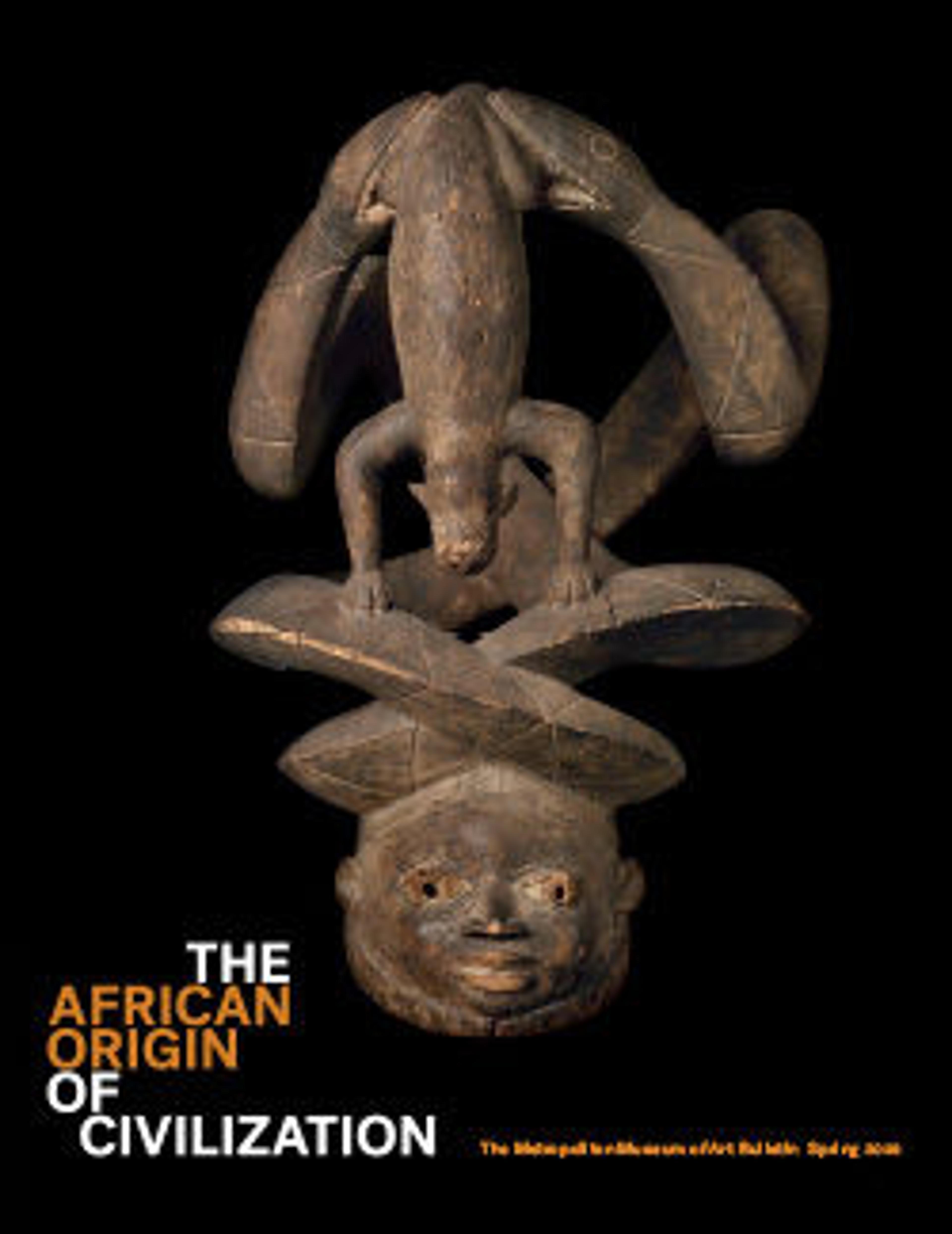Boli (power object)
A rough, cracked surface obscures exact identification of the organic and inorganic materials assembled to create the boli (pl.: boliw), or power object, shown here. Such objects play an essential role within Bamana spiritual life. Boliw have attracted much attention from Western observers due to their amorphous forms and unusual materials. The bulbous and amorphous shape is rather idiosyncratic within the repertoire of Bamana art. Boliw are composed of a wooden armature "core" wrapped in white cotton cloth, around which clay and sacrificial materials are encrusted. This boli has four short "legs" upon which it sits, as well as a single hump rising from the top. The creature that a boli represents is unidentifiable, but many take on the loose zoomorphic form suggested by this work, while others may be anthropomorphic.
The primary function of a </i>boli</i> is to accumulate and control the naturally occurring life force called nyama for the spiritual benefit of the community. The composition of the encrusted patina varies, but all the ingredients possess this inherent and important spiritual energy. The encrustation may include the blood of chickens or goats, chewed and expectorated kola nuts, alcoholic beverages, honey, metal, animal bones, vegetable matter, and sometimes millet. Sometimes this added matter is so extensive that it obscures the original wooden form and takes on a shape all its own. As the encrustation cracks and hardens throughout the years, it gives the impression that these ingredients are tightly packed within the boli. As the sacrificial materials accumulate over time, each added layer affords the structure greater spiritual power.
Boliw and their numerous ingredients have been interpreted in a number of different ways. It has been suggested that the disparate elements of which boliw are composed symbolize the various parts of the universe, so that the whole can be read as a model of Bamana cosmological belief. Such power objects are owned by male associations whose members progress through induction processes that span decades. Over time, they attain an esoteric knowledge of the natural and spiritual world. Opaque and mysterious to the uninitiated eye, boliw are safely handled only by those association members equipped with the most rarified expertise and knowledge.</br>
The primary function of a </i>boli</i> is to accumulate and control the naturally occurring life force called nyama for the spiritual benefit of the community. The composition of the encrusted patina varies, but all the ingredients possess this inherent and important spiritual energy. The encrustation may include the blood of chickens or goats, chewed and expectorated kola nuts, alcoholic beverages, honey, metal, animal bones, vegetable matter, and sometimes millet. Sometimes this added matter is so extensive that it obscures the original wooden form and takes on a shape all its own. As the encrustation cracks and hardens throughout the years, it gives the impression that these ingredients are tightly packed within the boli. As the sacrificial materials accumulate over time, each added layer affords the structure greater spiritual power.
Boliw and their numerous ingredients have been interpreted in a number of different ways. It has been suggested that the disparate elements of which boliw are composed symbolize the various parts of the universe, so that the whole can be read as a model of Bamana cosmological belief. Such power objects are owned by male associations whose members progress through induction processes that span decades. Over time, they attain an esoteric knowledge of the natural and spiritual world. Opaque and mysterious to the uninitiated eye, boliw are safely handled only by those association members equipped with the most rarified expertise and knowledge.</br>
Artwork Details
- Title: Boli (power object)
- Artist: Bamana Initiate, Komo association
- Date: Early 20th century
- Geography: Central Mali
- Culture: Bamana
- Medium: Wood, applied organic materials
- Dimensions: H. 14 1/4 × W. 7 1/4 × D. 20 1/2 in. (36.2 × 18.4 × 52.1 cm)
- Classification: Wood-Sculpture
- Credit Line: The Michael C. Rockefeller Memorial Collection, Bequest of Nelson A. Rockefeller, 1979
- Object Number: 1979.206.175
- Curatorial Department: The Michael C. Rockefeller Wing
Audio
1505. Figure: Bovine (Boli)
0:00
0:00
We're sorry, the transcript for this audio track is not available at this time. Please email info@metmuseum.org to request a transcript for this track.
Listen to more about this artwork
More Artwork
Research Resources
The Met provides unparalleled resources for research and welcomes an international community of students and scholars. The Met's Open Access API is where creators and researchers can connect to the The Met collection. Open Access data and public domain images are available for unrestricted commercial and noncommercial use without permission or fee.
To request images under copyright and other restrictions, please use this Image Request form.
Feedback
We continue to research and examine historical and cultural context for objects in The Met collection. If you have comments or questions about this object record, please contact us using the form below. The Museum looks forward to receiving your comments.
